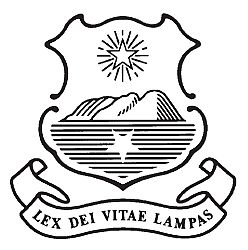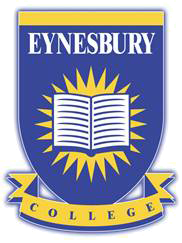
Fiorello H. LaGuardia High School of Music & Art and Performing Arts, often referred to simply as LaGuardia, is a public high school specializing in teaching visual arts and performing arts, located near Lincoln Center in the Lincoln Square neighborhood of the Upper West Side in Manhattan, New York City. Located at 100 Amsterdam Avenue between West 64th and 65th Streets, the school is operated by the New York City Department of Education, and resulted from the merger of the High School of Music & Art and the School of Performing Arts. The school has a dual mission of arts and academics, preparing students for a career in the arts or conservatory study as well as a pursuit of higher education.

Abbotsleigh is an independent Anglican early learning, primary and secondary day and boarding school for girls, located in Wahroonga, on the Upper North Shore of Sydney, New South Wales, Australia.
The Perpich Center for Arts Education is an agency of the state of Minnesota that seeks to advance K-12 education throughout the state by teaching in and through the arts. A 33-acre (130,000 m2) campus in Golden Valley houses the center's three main components: the outreach and professional development group, Perpich Arts High School and the Perpich Arts Library. Perpich serves as a resource for arts education, students, teachers, artists and arts and youth organizations in Minnesota.

Caringbah High School is a government-funded co-educational academically selective secondary day school, located in Caringbah, in the Sutherland Shire of Sydney, New South Wales, Australia. The school was opened in 1960 as a co-educational high school and was nominated to become selective in 1989, over the neighbouring Port Hacking High. As of 2021 approximately 907 students were enrolled.

Arcadia Charter School is a project-based 6–12th grade charter school located in Northfield, Minnesota, United States. The school has previously been known as South-Eastern Minnesota School of Arts and Technology prior to 2003, and Northfield School of Arts and Technology from 2003 to 2012.

Eagan High School (EHS) is a public high school in east-central Eagan, Minnesota, United States. The school opened in fall 1989 for ninth-grade students and for grades ten through twelve the following year. It is particularly noted for its fine arts programs and use of technology. As of the 2021-2022 school year, EHS had 2,111 students.

Presbyterian Ladies' College, Melbourne (PLC), is an independent, private, Presbyterian, day and boarding school for girls, located in Burwood, an eastern suburb of Melbourne, Victoria, Australia.

Independent School District 196 is a K-12 public school district located in the south suburban Twin Cities, near both Minneapolis and St. Paul in Minnesota.
ISD 279-Osseo Area Schools is a school system in Hennepin County, Minnesota. ISD 279 provides public education from the primary to secondary levels in the following to parts of Brooklyn Center, Brooklyn Park, Maple Grove, Osseo, Plymouth, Corcoran, Dayton and Rogers. District 279 is the fifth largest district in Minnesota, with a student population of approximately 20,900 in 2019.

Eastview High School is a comprehensive and college preparatory public high school in Apple Valley, Minnesota, United States. Established in 1997, Eastview is the newest of the four high schools serving Independent School District 196. Newsweek ranked the school in their "List of the Top High Schools in America" for the sixth consecutive time. Eastview has also been recognized by U.S. News & World Report as one of America's Best High Schools. In 2013, Eastview was ranked in the top 3% of the most challenging high schools in the United States, as well as a top comprehensive high school in Minnesota. Prior to the 2010–2011 school year, Eastview was a member of the Lake Conference, but then broke off with most of the Lake Conference schools in order to create the South Suburban Conference.
Mount Carmel Catholic College is a systemic Catholic co-educational secondary school of the Marist tradition located in Varroville, a suburb 46 kilometres south-west of Sydney. It is situated within the city of Campbelltown, New South Wales, Australia. The current principal is Stephen Lo Cascio.

Chanhassen High School (CNHS) is a four-year comprehensive public high school located in Chanhassen, Minnesota, United States, a southwestern suburb of Minneapolis. Construction of the school was approved by voters in 2006 in response to rapidly growing enrollment in Carver County and overcrowding at Chaska High School, the district's other high school.
Crosswinds East Metro Arts and Science School was a year-round arts and science magnet school located in Woodbury, Minnesota, United States. Crosswinds focuses on cultural diversity, alternative learning styles, and environmental science as the foundations of its education. It provides academic and artistic opportunities for students from urban and suburban neighborhoods to achieve continuing success in a year-round program. The Perpich Center for Arts Education manages Crosswinds. Crosswinds teaches students from ages 11 to 16. In the beginning of the 2000s there were large gains for students of color, and with the recent conveyance, student achievement has declined significantly according to standardized state testing results.

C.A. McMillen High School, commonly known as McMillen High School, McMillen, or MHS, is a secondary school serving grades nine and ten, located in the East Cluster of the Plano Independent School District. Murphy Middle School and Armstrong Middle School feed into McMillen. Students graduating from McMillen will attend Plano East Senior High School for the eleventh and twelfth grades. In 2015, the school was rated "Met Standard" by the Texas Education Agency.
Tacoma Science and Math Institute, is a public high school in the Tacoma Public Schools district. It is located in Metro Parks Tacoma in Tacoma, Washington. The school offers an integrated inquiry-based curriculum for students in grades 9-12 that combines the arts, science, math, and environmental and marine studies. It operates in partnership with local organizations, including the Point Defiance Zoo and Aquarium as well as local universities. SAMi also operates in partnership with other local schools, including its sister schools Tacoma School of the Arts (SOTA) and Industrial Design Engineering and Art (iDEA).

Eynesbury Senior College was an independent co-educational senior high school located on Franklin Street in the city centre of Adelaide, the capital of South Australia. The college comprised a modern, five-storey, multi-function complex and caters for Year 10, 11 and 12 students.

Verrado High School is a public high school in the Verrado community of Buckeye, Arizona, United States. Operated by the Agua Fria Union High School District, the school primarily serves the Verrado area and is the fourth school in the district.
North American collegiate sustainability programs are institutions of higher education in the United States, Mexico, and Canada that have majors and/or minors dedicated to the subject of sustainability. Sustainability as a major and minor is spreading to more and more colleges as the need for humanity to adopt a more sustainable lifestyle becomes increasingly apparent with the onset of global warming. The majors and minors listed here cover a wide array of sustainability aspects from business to construction to agriculture to simply the study of sustainability itself.

Tesla STEM High School is a magnet high school in Redmond, Washington operated by the Lake Washington School District. It serves as a lottery-selected choice program and offers a STEM-based curriculum.
Gladstone State High School is a coeducational public secondary school based in West Gladstone, a suburb of Gladstone in the Gladstone Region in Queensland, Australia. The school has a total enrolment of more than 1500 students per year, with an official count of 1552 students in August 2020.














